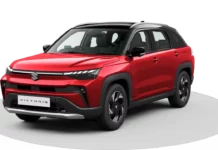Purchasing two-wheeler insurance is a crucial step for every motorcycle or scooter owner to protect their vehicle and themselves from potential risks on the road. With several options available in the market, navigating the process of selecting the right insurance policy can be overwhelming. However, by understanding key factors and following essential tips, you can make informed decisions to ensure adequate coverage and peace of mind while riding.
There are several two-wheeler insurance options available in India, each catering to varying needs and budgets. Here’s a breakdown of the most common types and their functionalities:
1. Third-Party Liability Insurance
This is essentially a building block since it safeguards you from financial liabilities arising from injuries or property damage caused to a third party in an accident.
- Benefits: Financial security and legal protection. The insurance company shoulders the financial burden of compensating the injured third party, alleviating legal hassles.
- Limitations: Provides no coverage for your own motorcycle. If your bike is damaged, irrespective of fault, the repair or replacement costs fall entirely on you.
2. Comprehensive Two-Wheeler Insurance
This comprehensive coverage goes beyond the mandatory third-party liability, offering a safety net for both your motorcycle and yourself, as well as for third parties.
Benefits:
- Own Damage Cover: A financial savior in case of accidental damage to your motorcycle, regardless of fault. The insurance company covers repair costs or replaces the motorcycle entirely (subject to policy limits and depreciation).
- Theft Cover: Provides a sigh of relief in case of theft, compensating you for the motorcycle’s value (subject to policy limits and depreciation).
- Fire and Natural Calamities Cover: Protects you from financial losses arising from unforeseen events like fire, floods, earthquakes, or other natural disasters.
- Optional Personal Accident Cover: Provides crucial financial support to your dependents in case of injuries or death sustained in an accident.
Limitations: Higher premiums compared to third-party insurance. However, the added protection for unforeseen events can be invaluable.
3. Standalone Own-Damage (OD) Insurance
This type of insurance offers coverage for damage to your motorcycle in an accident, irrespective of fault, but excludes theft and other comprehensive benefits.
Benefits:
- Cost-Effective: Standalone OD insurance typically comes at a lower premium compared to comprehensive coverage.
- Flexibility: Allows you to combine it with your existing third-party insurance for a customised coverage plan suited to your specific needs and budget.
Limitations:
- Limited Coverage: Excludes theft, fire, and other comprehensive perils.
- No Personal Accident Cover: Standalone OD insurance typically doesn’t include personal accident cover. Consider adding this as an optional rider if you require financial protection in case of injury or death due to an accident.
Equipping Yourself for a Smart Purchase
Now that you understand the types of coverage available, here are some tips to ensure you make a well-informed decision when purchasing two-wheeler insurance:
- Become a Comparison Pro: Don’t settle for the first quote you receive. Utilise online insurance aggregator websites to compare quotes from multiple reputable insurance companies. This allows you to assess the varying coverage options and premiums offered by different insurers.
- Read Reviews and Ratings: Online reviews and ratings offer valuable insights into customer service experiences, claim settlement efficiency, and overall reputation of the insurance company. Research online to get a sense of these aspects before making your decision.
- Choose Add-on Covers Wisely: Many insurance companies offer a variety of add-on covers that can further tailor your policy to your specific needs. Popular add-on covers include:
- Personal Accident Cover (Already discussed)
- Roadside Assistance (towing service, flat tire repair, battery jumpstart)
- Engine Protection Cover
- Depreciation Waiver Cover (reduces depreciation deductions applied during claim settlement for repairs or replacements)
Carefully evaluate your needs and budget before opting for add-on covers. Don’t get overwhelmed – choose the ones that provide the most relevant protection for you.
- Maintain a Good No Claim Bonus (NCB): Ride safely and avoid filing claims whenever possible. This helps you accumulate a No Claim Bonus (NCB), which translates to significant discounts on your future premiums. Responsible riding habits not only ensure your safety but also save you money in the long run.
- Renew on Time, Every Time: Ensure timely renewals to avoid a lapse in coverage. Most online platforms offer renewal reminders and facilitate a seamless renewal process. Don’t leave yourself exposed by neglecting timely renewals. A lapse in coverage can be a significant hurdle if you’re involved in an accident during that period.
- Understand the Policy Wording: Don’t just sign on the dotted line. Before finalising your purchase, take time to read the policy document carefully. Ensure you understand the inclusions and exclusions, claim settlement process, any limitations or deductibles (the portion of the repair cost you bear), and the procedure for filing claims. Don’t hesitate to reach out to the insurance company for clarification on any unclear points. A clear understanding of the policy protects you from unexpected surprises during the claim process.
- Negotiate (if possible): While not always an option, depending on your riding history, the value of your motorcycle, and the insurance company, some room for negotiation on premiums might exist. Explore this possibility, particularly if you have a clean driving record and a good risk profile.
- Invest in Safety Gear: Remember, the best insurance policy is often the one you never have to use. Invest in high-quality safety gear like a helmet, riding gloves, sturdy footwear, and a jacket with elbow and knee protectors. This minimises the risk of injuries in case of an accident and potentially reduces the number of claims you might need to file.
In conclusion, purchasing two-wheeler insurance requires careful consideration and attention to detail to meet your specific needs and preferences. By following the tips outlined in this guide, you can navigate the process effectively and select a policy that provides comprehensive coverage at an affordable price. Remember to review your policy periodically and make adjustments as needed to stay protected on the road. With the right insurance coverage in place, you can enjoy your rides with confidence, knowing that you are prepared for any unexpected circumstances that may arise.
Also Read: Road Trips Are More Secure Than Ever. Get the Road Trip Cover on Bajaj Markets






